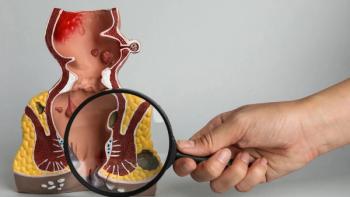
Drug Combo May Prevent Chemo-Induced Nausea and Vomiting in Some Patients
Aprepitant, palonosetron and dexamethasone curbed chemotherapy-induced nausea and vomiting in certain women with gastrointestinal cancers who were receiving FOLFIRI or FOLFOX regimens.
A combination of aprepitant, palonosetron – both anti-nausea drugs – and the anti-inflammatory drug dexamethasone reduced chemotherapy-induced nausea and vomiting (CINV) in younger women with gastrointestinal cancers being treated with FOLFOX or FOLFIRI.
“(CINV is) among the most common and distressing adverse effects in patients receiving antineoplastic therapy, which could seriously affect the quality of patients’ life and markedly reduce treatment adherence,” study authors of a recent JAMA article on the drug combination wrote.
The trial analyzed the efficacy of the aprepitant, palonosetron and dexamethasone in preventing CINV from the start of chemotherapy to the morning of day six. During this time, patients completed a diary to report any vomiting, use of rescue therapy (if needed) and daily nausea.
The study took place from 2015 to 2020 and included 248 women aged 50 years or younger who had a history of drinking little to no alcohol. Of those patients, 74.5% had colorectal cancer and 73.7% had stage IV gastrointestinal cancer.
A total of 123 patients were randomly assigned the aprepitant-containing regimen, while 118 were placed on the placebo regimen; 79.4% of participants were on FOLFOX chemotherapy, and 20.6% were undergoing FOLFIRI chemotherapy.
The study authors noted that CINV can be associated with patient-related risk factors, such as female sex and young age, as well as patients with gastrointestinal cancer.
Eighty-seven percent of patients on the aprepitant regimen reported that they had a complete response (CR), meaning that they did not experience any vomiting or the need to use rescue medication during the first phase of the chemotherapy cycle. This was true for a smaller percentage (66.7%) of patients in the placebo group.
However, the data showed that the effectiveness of the three-drug anti-nausea regimen may have been dependent on the type of chemotherapy a patient was receiving, though quality of live was improved in the aprepitant group.
“In the 193 patients who received FOLFOX chemotherapy, the CR rate in the overall phase was significantly higher in the aprepitant vs placebo group,” the authors wrote. “In the 50 patients who received FOLFIRI chemotherapy, the CR rate in the overall phase was numerically, but not significantly, higher.”
Common side effects reported in both groups were myelosuppression (decrease in the production of red and white blood cells and platelets, increased liver enzymes, anorexia, peripheral neurotoxicity and fatigue. While there was no significant difference in side effects between the two groups, there were more grade 3 and 4 side effects, like abnormal hematologic tests, in the aprepitant group.
“The possibility of hematologic adverse events highlights the importance of reminding patients to accept routine blood tests regardless of the antiemetic regimen and chemotherapy regimen being used,” they said.
Study authors also noted limitations that could have affected the outcomes of the study.
“First, the prevention of aprepitant-induced CINV was evaluated solely during the first course of chemotherapy. The role of aprepitant in anticipatory vomiting and during the complete treatment regimen is unknown,” they said.
It was also noted that it is important for future studies to test this anti-CINV regimen against more chemotherapies, as well as broadening the patient population involved in evaluating the treatment.
For more news on cancer updates, research and education, don’t forget to




